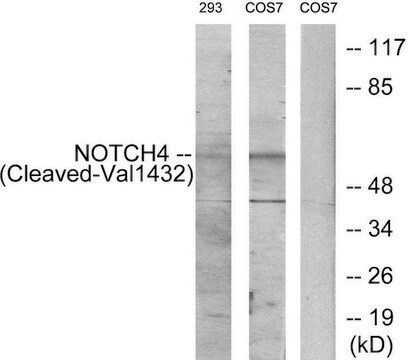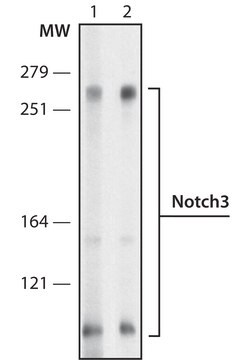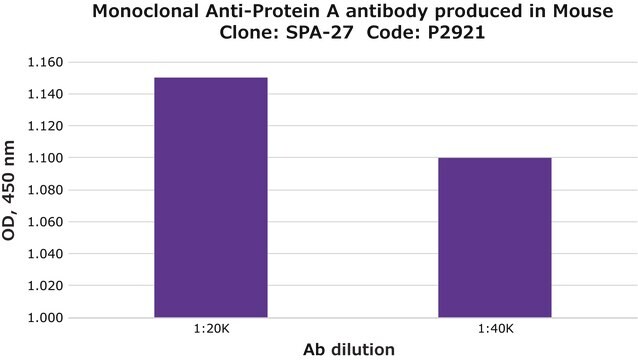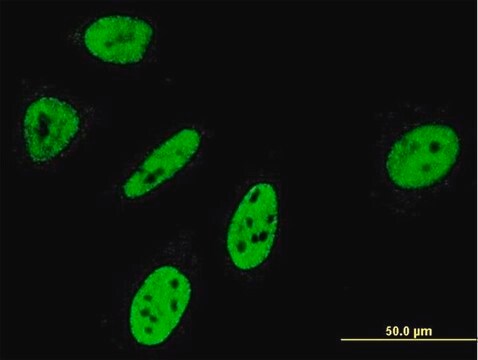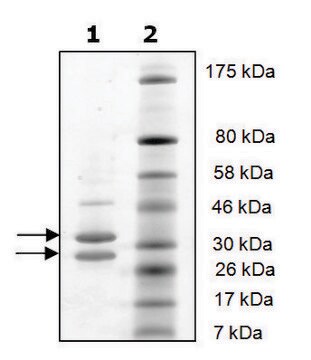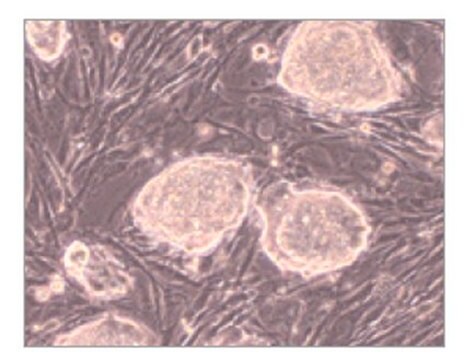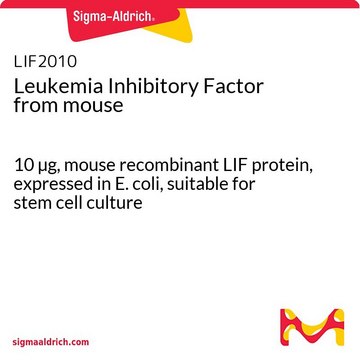MABC594
Anti-NOTCH 3/N3ECD Antibody, clone 1E4
clone 1E4, 1 mg/mL, from mouse
Sinônimo(s):
Neurogenic locus notch homolog protein 3, Notch 3, Notch 3 extracellular truncation, Notch 3 intracellular domain, N3ECD Domain, Ectodermal N3ECD, N3ECD
About This Item
Produtos recomendados
fonte biológica
mouse
Nível de qualidade
forma do anticorpo
purified immunoglobulin
tipo de produto de anticorpo
primary antibodies
clone
1E4, monoclonal
reatividade de espécies
human
concentração
1 mg/mL
técnica(s)
electron microscopy: suitable
immunocytochemistry: suitable
western blot: suitable
Isotipo
IgG1κ
nº de adesão NCBI
nº de adesão UniProt
Condições de expedição
wet ice
modificação pós-traducional do alvo
unmodified
Informações sobre genes
human ... NOTCH3(4854)
Descrição geral
Especificidade
Imunogênio
Aplicação
Immunohistochemistry Analysis: A representative lot of this antibody was used to detect NOTCH 3 in Huamn vascular smooth muscle cells & smooth muscle cells of vessels from CADASIL brain tissue (Jouet, A., et al. (2000) Journal of Clinical Investigation. 105(5):597-605).
Electron Microscopy: A representative lot of this antibody was used to detect NOTCH 3 in smooth muscle cells of vessels from CADASIL brain tissue (Jouet, A., et al. (2000) Journal of Clinical Investigation. 105(5):597-605).
Immunohistochemistry Analysis: A representative lot of this antibody was used to detect NOTCH 3 in vessels of a CADASIL patient (Rouchox, M.M., et al. (2003) American Journal of Pathology. 162(1):329-342).
Immunohistochemistry Analysis: A representative lot of this antibody was used to detect NOTCH 3 in Human colorectal carcinoma (Serafin, V., et al., (2011) Journal of Pathology. 224(4):448-60).
Apoptosis & Cancer
Developmental Signaling
Qualidade
Western Blotting Analysis: 1 µg/mL of this antibody detected NOTCH 3 & the ectodermal domain (N3ECD) in 10 µg of MCF-7 cell lysate.
Descrição-alvo
This antibody detects both the full length NOTCH 3 protein (~260 kDa) and the ectodermal domain N3ECD (~210 kDa).
forma física
Armazenamento e estabilidade
Exoneração de responsabilidade
Não está encontrando o produto certo?
Experimente o nosso Ferramenta de seleção de produtos.
Código de classe de armazenamento
12 - Non Combustible Liquids
Classe de risco de água (WGK)
WGK 1
Ponto de fulgor (°F)
Not applicable
Ponto de fulgor (°C)
Not applicable
Certificados de análise (COA)
Busque Certificados de análise (COA) digitando o Número do Lote do produto. Os números de lote e remessa podem ser encontrados no rótulo de um produto após a palavra “Lot” ou “Batch”.
Já possui este produto?
Encontre a documentação dos produtos que você adquiriu recentemente na biblioteca de documentos.
Nossa equipe de cientistas tem experiência em todas as áreas de pesquisa, incluindo Life Sciences, ciência de materiais, síntese química, cromatografia, química analítica e muitas outras.
Entre em contato com a assistência técnica
